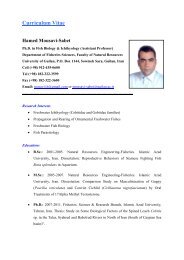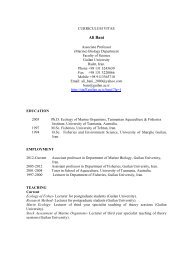Medical Tourism in Developing Countries
Medical Tourism in Developing Countries
Medical Tourism in Developing Countries
- No tags were found...
Create successful ePaper yourself
Turn your PDF publications into a flip-book with our unique Google optimized e-Paper software.
Would You Like a Safari With Your Lasik Surgery? ● 75on a nonsubsidized fee-for-service basis. 41 With the grow<strong>in</strong>g importanceof medical tourism, hospital capacity <strong>in</strong> the late 1990s <strong>in</strong>creased by over5 percent per year, with private capacity <strong>in</strong>creas<strong>in</strong>g at almost three timesthe rate of public. 42 Thailand has a larger private sector and a market orientedhealth-care system that offers its population choice <strong>in</strong> care, 43 as doesChile’s competitive dual system. 44 In both cases, consumer choice is largelybased on disposable <strong>in</strong>come: the higher the <strong>in</strong>come, the more private healthcare will be demanded. With growth and ris<strong>in</strong>g <strong>in</strong>comes, the domesticpopulation demands more private health care. This alleviates the demandon the public sector and <strong>in</strong>creases the competition with foreign patients.Market Structures <strong>in</strong> <strong>Medical</strong> <strong>Tourism</strong>At one end of the spectrum, a plastic surgeon <strong>in</strong> Rio de Janeiro is s<strong>in</strong>glehandedlyresponsible for attract<strong>in</strong>g most foreign patients to Brazil. 45 At theother end, large hospitals predom<strong>in</strong>ate (such as Indraprastha <strong>Medical</strong>Corporation <strong>in</strong> New Delhi, the third-largest corporate hospital outside theUnited States <strong>in</strong> 2005). While both small and large entities exist, it is thelarge hospitals that have been treat<strong>in</strong>g foreigners. By sheer size, hospitalssuch as Apollo <strong>in</strong> India and the Bumrungrad <strong>in</strong> Thailand have become thegrandes dames of LDC medical tourism. Their size, measured by the numberof employees, sales revenue, and number of unit sales to capital employed,is impressive. They did not start off that way. Initially Apollo’s goal was toproduce a state-of-the-art hospital for the 250 million or so middle-classIndians who could afford to forgo public hospitals. Then it expanded <strong>in</strong>tomedical tourism, attract<strong>in</strong>g foreign patients. 46 Now, major Indian corporationssuch as Fortis, Max, Tata, Wockhardt, Parimal, and Escorts have madesimilar <strong>in</strong>vestments and are sett<strong>in</strong>g up hospitals, and promot<strong>in</strong>g medicaltourism.<strong>Medical</strong> tourism, especially <strong>in</strong> the <strong>in</strong>vasive and diagnostic sectors, tendsto be dom<strong>in</strong>ated by large size firms operat<strong>in</strong>g <strong>in</strong> highly concentrated markets.With the exception of Cuba, where the government has a monopolyon medical tourism, most countries under study have oligopolistic healthcare<strong>in</strong>dustries <strong>in</strong> which a small number of producers dom<strong>in</strong>ate. Barriers toentry are too high <strong>in</strong> medical tourism for monopolistic competition todevelop. Each producer has some power over price and output, but all are<strong>in</strong>terdependent, and their product depends on those of the others. Firmsand <strong>in</strong>dustries that are mutually <strong>in</strong>terdependent may beg<strong>in</strong> to function likeoligopolies and have reactions to each other’s behavior. This is especiallytrue <strong>in</strong> the cross-fertilization that occurs between corporate medic<strong>in</strong>e forforeigners and the hospitality, air transport, and food/beverage <strong>in</strong>dustries.
















